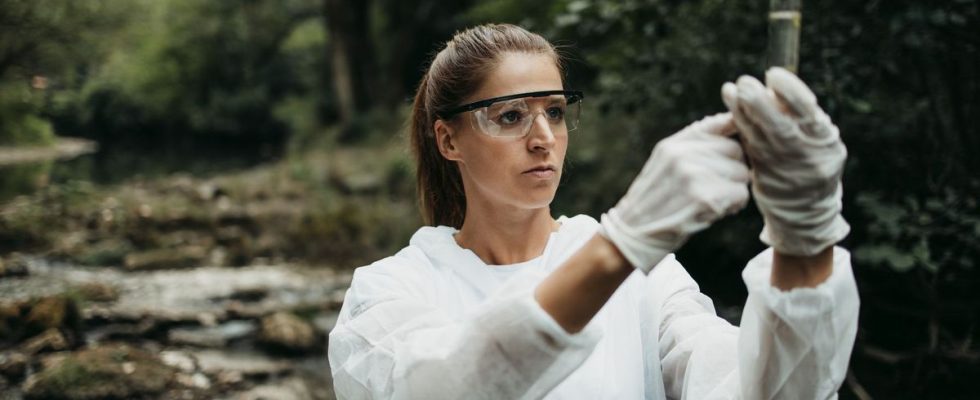Published on
Updated
Reading 4 mins.
in collaboration with
Ivan Pourmir (medical oncologist)
According to information from Le Parisien on May 19, Diane Diakité, the mother of a teenager who died in 2021, is preparing to file a complaint: the breast cancer which struck her daughter would, according to her, be the result of an environment strongly polluted. Dr. Ivan Pourmir, medical oncologist, sheds light on the possible conclusions of such a tragedy.
Diane Diakité is preparing to fight for the truth, and intends to make it known today on the front page of Parisian. His daughter, “his princess”, died in December 2021 at only 13 years old, from a very rare breast cancer, a grade II mammary angiosarcoma. A cancer that has only affected 8 women in France for 40 years, and all of them had been exposed to radiotherapy. Diane wants to understand, with the energy of desperation, how her teenager could have been affected, so the genetic track is excluded, according to her. It targets in the first line the pollution of Franconville, in the Val d’Oise.
According to the article devoted to her, Diane Dakité sets out the reasons that make her doubt. To find what killed her daughter, this mother had a lock of hair collected from 3-year-old Shiloh analyzed, as well as another lock cut shortly before her death.
In the first, the presence of bismuth and tin proved to be far too high. Poisoning with these two metals would cause symptoms worthy of Alzheimer’s on the one hand, and liver damage on the other. Tin could also be responsible for “malfunction of the immune system, (from an alteration of the chromosomes, (from) a deficiency in red blood cells, (from) damage to the brain, (from) depressions”.
In the second wick, the one cut at 13, the finding is even more worrying. No more tin, but now antimony, a carcinogen. Titanium is also found. According to ANSES (National Health Security Agency), exposure to this metal by the respiratory route “can cause lung overload and lead to an inflammatory reaction, causing proliferative lesions. In other words, to cancers” indicates the Parisian. Titanium is currently recognized as being able to cause malignant tumors in exposed rats. In humans, conclusions are limited. Cerium is also found, as well as 14 other metals including aluminum, copper, chromium, mercury or even lead, in lower doses!
A complaint filed in the hope of carrying out the investigation
For this mother, only the environment can be responsible for what she judges as a “poisoning”. The family lived for 11 years opposite the paint shop of a car garage. A nearby real estate program had to carry out a decontamination operation. The Georisks portal also lists 13 former industrial sites within a radius of less than 500 m likely to be the source of soil pollution near the address where Shiloh and his family lived.
The school where she was educated until 2019 had in its environment close to former industrial sites. The hundred-year-old tree that stood in the yard had to be cut down because it was too sick. So many signs that should lead to more investigations. Diane will file a complaint against X with the public prosecutor of Pontoise.
“It is very difficult to establish the environmental factors of cancer”
To learn a little more about the dangers of metals and pollution in this case, we contacted Dr. Ivan Pourmir, researcher and medical oncologist, member of our expert committee. This one informs us of the difficulty in such a case of determining with precision the elements really involved:
“Pollution and environmental factors are increasingly implicated in the occurrence of cancers. It is plausible that the pollution to which the patient was exposed played a role in the onset of her cancer, but this remains difficult to demonstrate in the current state of knowledge and studies carried out for the moment. A genetic susceptibility in this young girl is not necessarily to be ruled out either. There are still a large number of cancer-facilitating genetic factors that have not been identified, but are assumed to exist. Rarely, predisposing mutations can occur in an individual without their parents being carriers.
Finally, the association of environmental and genetic factors is always possible. “Genetic susceptibility and pollution are not incompatible, a certain number of predisposing hereditary mutations render faulty the biological systems which precisely make it possible to preserve the integrity of the DNA against pollutants, and thus to avoid cancerous transformation” says our expert.
Take responsible action when in serious doubt
However, the doctor does not invite you to give up and wait for perfect proof to act, quite the contrary.
“Data on the carcinogenicity of pollutants come both from studies in which cell cultures or animals are subjected to these substances, or from studies in which the occurrence of cancers in humans who are exposed to them is observed. None of these studies will ever be perfect: cell cultures and animals can differ from what happens in humans, and observational studies have biases since exposed and unexposed people are different in other ways. We cannot therefore wait indefinitely to have perfect data, as some lobbyists hypocritically claim” insists Dr. Pourmir.
Extensive work to discover the causes of a disease in the case of Shiloh, as of all exposed people who present risks of cancers of unknown causes must be considered:
“As long as there is a presumption, where many people are exposed and where studies, although imperfect, overlap, responsible public health measures must be taken. This is for example the case of glyphosate used in agriculture, but despite this adequate measures have not yet been taken by our government and the European Union. We must also provide ourselves with the means to acquire data by financing studies if they do not yet exist, and in the meantime the precautionary principle must prevail. Citizens must be aware of these important issues that concern them directly”.
